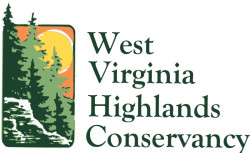A look back at our 50 years of actions for the mountains shows that the Highlands Conservancy has had plenty of help. Groups and individuals joined with us in efforts to conserve and protect. We worked with others to communicate, educate, lobby, and affect legislation. But sometimes, when there was no other recourse, we have needed a good lawyer. And we’ve found them…or they’ve found us. As a group of volunteers, with no office and a reliance upon donations, we’ve been grateful for our good fortune with our legal aid. What follows is an attempt to acknowledge some of that assistance.
Our history book for our first 40 years says, regarding legal efforts for Otter Creek, “Some of the details behind the Otter Creek injunction illustrate the dynamics of joining local West Virginia resource people with expertise from nearby states, a characteristic that has distinguished the Conservancy from its origin to the present day.” Our lawyers for that 1970 campaign were volunteers Fred Anderson and Jim Moorman from Washington, D.C., and Willis O. Shay from Clarksburg. Anderson’s later career included serving as Dean of the American University Law School, while Moorman also continued a distinguished path and was president of Taxpayers Against Fraud.
We acted on behalf of Shavers Fork in the early 1980’s. Charleston lawyer David Wooley served on the Highlands board and worked on the “522 petition” which argued for prohibition of strip mining on the Mower Tract. WVU law professor Pat McGinley also tackled the “unsuitability” aspect of strip mining there and pursued an injunction; he was given a lifetime membership with WVHC for his cumulative efforts.
“Once again, the Conservancy finds itself being reluctantly forced to the courts,” was how our second president Bob Burrell described one of our legal struggles.
And that could sentiment could apply to that notorious highway—Corridor H. Our book recounts, “…Hugh Rogers, a lawyer, would shepherd the Conservancy and Corridor H Alternatives into a lengthy court battle, then a protracted mediation, a first for the Conservancy…”. Long-time followers of that issue know that that mediation meant a great deal, despite the creeping progression of the road. The original lawsuit was filed by Tom Michael of Clarksburg and Andrea Ferster of Washington, D.C.
Tom Rodd, of Morgantown, was helpful in the Laurita Case which involved West Virginia issuing mining permits for companies despite a history of violations in other states. He also helped with our Living Streams water monitoring program and worked in the office of WV Attorney General Darrell McGraw.
John McFerrin, a lawyer and our current editor of “The Highlands Voice” has a pen that can be quite sword-like. He demonstrated that in his “Minority Report” of his service on Governor Cecil Underwood’s Mountaintop Mining Task Force. John came to us after earlier years with the Appalachian Research and Defense Fund [APPALRED] of Kentucky.
Our first 25 years focused on the northern part of the state. But strip mining and particularly Mountaintop Removal mining drew our attention in southern counties. In 1995, Tom Galloway and Walt Morris filed complaints of citizens regarding bonding, forfeited sites, and more with the Office of Surface Mining. In response, their legal qualifications were questioned. They persisted, we persisted and, in 1989, after a period of more intense negotiations, our then-president Cindy Rank thanked Galloway, Jim Lyon, and Josh Barrett, citing their huge investments of time over many months.
One notable case challenging Mountaintop Removal Mining was “Bragg v. Robertson”. Our historian said, “Joe Lovett, a Charleston attorney with the nonprofit firm Mountain State Justice Inc., Patrick C. McGinley, a West Virginia law professor and veteran litigant for the Conservancy, Suzanne M. Weise, a Morgantown attorney, and James Hecker, of the Washington group Trial Lawyers for Public Justice, comprised the legal team.”
Finally, alas, that book did it again. Dave Elkinton’s “Fighting the Save the Highlands: The First Forty Years of the West Virginia Highlands Conservancy” was once again too engrossing.
The intention, here in our 50th year, was to skim that volume again and focus on some WVHC champions. However, that is very hard to do without re-reading whole portions. It is just too interesting. A searcher can get entirely sidetracked and re-visit battle after battle, issue after issue, special place after special place. I did, you might do so too.
Apologies are extended to any helpful lawyers left off this quick recounting. Sincere thanks to those who worked with us in the last 50 years and those who are doing so, right now, as the battles remain.
